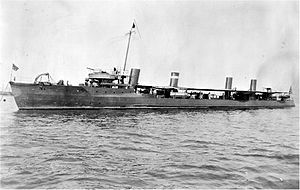천칭자리 16
16 Librae| 관측 데이터 에폭 J2000 이쿼녹스 J2000 | |
|---|---|
| 별자리 | 천칭자리 |
| 우측 상승 | 14h 57m 11.00009s[1] |
| 탈위임 | −04° 20′ 47.2547″[1] |
| 겉보기 크기(V) | 4.49[2] |
| 특성. | |
| 스펙트럼형 | F2 V[3] |
| U-B색지수 | +0.05[2] |
| B-V색지수 | +0.32[2] |
| 아스트로메트리 | |
| 방사 속도(Rv) | +26.3±0.6km[4]/s |
| 적정운동(μ) | RA: −96.98[1]mas/yr Dec.: -1965.40mas[1]/yr |
| 시차(시차) | 37.17 ± 0.32 마스[1] |
| 거리 | 87.7 ± 0.8 ly (26.9 ± 0.2 pc) |
| 절대치수(MV) | 2.32[5] |
| 세부 사항 | |
| 16리브 A | |
| 미사 | 1.47[6] M☉ |
| 루미도 | 9.77[5] L☉ |
| 표면 중력(log g) | 3.99[6] cgs |
| 온도 | 7,187±244[6] K |
| 금속성 [Fe/H] | -0.13[7] 덱스 |
| 회전 속도(v sin i) | 113.3km[8]/s |
| 나이 | 660[6] Merr |
| 기타 지정 | |
| 데이터베이스 참조 | |
| 심바드 | 자료 |
천칭자리 16은 천칭자리에 있는 별이다.희미한 별이지만 육안으로 볼 수 있는 4.49의 외관상으로는 볼 수 있는 별이다.[2]연간 시차 변화량 37.17[1] mas는 거리 추정치가 87.7광년이다.그것은 방사상 속도 +26 km/s로 태양으로부터 더 멀리 이동하고 있다.[4]
이것은 F2 V의 별 분류를 가진 보통의 F형 주계열성이다.[3]약 6억[6] 6천만 년 전으로 추정되며, 113 km/s의 예상 회전 속도로 빠르게 회전하고 있다.[8]이 별은 태양의 1.47배[6] 질량을 가지고 있으며 약 7,187K의 유효 온도에서 태양의 10배 가까운 광도를[5] 광구에서 방출하고 있다.[6]
16 Liberae는 1999년 현재 위치각 297°를 따라 22.8 아크초의 각이 분리되어 있는 공통적인 적절한 동작 동반자를 가지고 있다.지정된 성분 B, 이것은 약 M6 등급과 12.19의 적외선 J-밴드 크기를 가진 적색 왜성이다.[10]
참조
- ^ a b c d e f van Leeuwen, F. (November 2007), "Validation of the new Hipparcos reduction", Astronomy and Astrophysics, 474 (2): 653–664, arXiv:0708.1752, Bibcode:2007A&A...474..653V, doi:10.1051/0004-6361:20078357, S2CID 18759600.
- ^ a b c d Ducati, J. R. (2002), "VizieR Online Data Catalog: Catalogue of Stellar Photometry in Johnson's 11-color system", CDS/ADC Collection of Electronic Catalogues, 2237, Bibcode:2002yCat.2237....0D.
- ^ a b Houk, N.; Swift, C. (1999), "Michigan catalogue of two-dimensional spectral types for the HD Stars", Michigan Spectral Survey, 5, Bibcode:1999MSS...C05....0H.
- ^ a b de Bruijne, J. H. J.; Eilers, A.-C. (October 2012), "Radial velocities for the HIPPARCOS-Gaia Hundred-Thousand-Proper-Motion project", Astronomy & Astrophysics, 546: 14, arXiv:1208.3048, Bibcode:2012A&A...546A..61D, doi:10.1051/0004-6361/201219219, S2CID 59451347, A61.
- ^ a b c Anderson, E.; Francis, Ch. (2012), "XHIP: An extended hipparcos compilation", Astronomy Letters, 38 (5): 331, arXiv:1108.4971, Bibcode:2012AstL...38..331A, doi:10.1134/S1063773712050015, S2CID 119257644.
- ^ a b c d e f g David, Trevor J.; Hillenbrand, Lynne A. (2015), "The Ages of Early-Type Stars: Strömgren Photometric Methods Calibrated, Validated, Tested, and Applied to Hosts and Prospective Hosts of Directly Imaged Exoplanets", The Astrophysical Journal, 804 (2): 146, arXiv:1501.03154, Bibcode:2015ApJ...804..146D, doi:10.1088/0004-637X/804/2/146, S2CID 33401607.
- ^ Casagrande, L.; et al. (June 2011), "New constraints on the chemical evolution of the solar neighbourhood and Galactic disc(s). Improved astrophysical parameters for the Geneva-Copenhagen Survey", Astronomy and Astrophysics, 530: A138, arXiv:1103.4651, Bibcode:2011A&A...530A.138C, doi:10.1051/0004-6361/201016276, S2CID 56118016.
- ^ a b Schröder, C.; Reiners, Ansgar; Schmitt, Jürgen H. M. M. (January 2009), "Ca II HK emission in rapidly rotating stars. Evidence for an onset of the solar-type dynamo" (PDF), Astronomy and Astrophysics, 493 (3): 1099–1107, Bibcode:2009A&A...493.1099S, doi:10.1051/0004-6361:200810377
- ^ "16 Lib". SIMBAD. Centre de données astronomiques de Strasbourg. Retrieved 2018-01-30.
- ^ Scholz, R. -D. (March 2016), "Overlooked wide companions of nearby F stars", Astronomy & Astrophysics, 587: 8, arXiv:1601.01896, Bibcode:2016A&A...587A..51S, doi:10.1051/0004-6361/201527965, S2CID 118348424, A51


